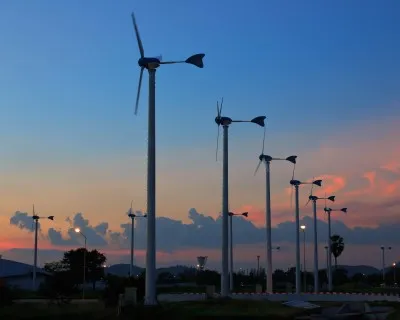
China reveals new quota of 1,800-2,000 minimum utilisation hours for wind power
Minimum quota for solar power on the other hand is at 1,300-1,500 hours.
China’s National Development and Reform Commission (NDRC) recently announced a renewable energy quota that sets minimum utilization hours on wind and solar power in select cities in eight provinces and three autonomous regions.
According to a research note from Moody's, the measure is credit positive for wind and solar power companies because it will help alleviate the current high levels of curtailment. Curtailment refers to the reduction in power generation compared to the optimal utilization of wind and solar power capacity.
Among power companies, China Longyuan Power Group Corporation Ltd. will benefit most from the new quota owing to it being China’s largest wind power company. China Three Gorges Corporation and China General Nuclear Power Corporation will also benefit through their wind and solar power portfolios.
However, companies that invest heavily in coal-fired power, such as China Resources Power Holdings Co., Ltd. and Beijing Energy Holding Co. Ltd., will be negatively affected by the quota given the likely increasing dispatch of wind power over coal-fired power in the eight provinces and three regions.
The renewable energy quota follows the regulator’s broad guidance in March 2016 on the renewable energy quota system, which aims to prioritize the dispatch of electricity generated from clean energy and support the country’s renewable energy development and national goal to reduce carbon emissions amid low power demand.
Here's more from Moody's:
The new system sets annual minimum utilization hours (1,800-2,000 hours of wind power and 1,300-1,500 hours of solar power) to be off-taken by grid operators in select cities in eight provinces and three autonomous regions.
To achieve the NDRC’s targets, grid operators are required to sign priority generation and dispatch agreements with qualified wind and solar power companies by the end of June. Most of the select provinces and autonomous regions are rich-wind regions that suffer from high curtailment. Utilization hours in these regions ranged from 1,184 hours in Gansu to 1,865 hours in Inner Mongolia in 2015, both below the minimum utilization hours required under the new quota.
Curtailment is a key constraint in the development of wind power in China. According to China’s National Energy Administration, the average curtailment rate of the country’s wind power rose to 26% in first-quarter 2016 from 15% in 2015 and 8% in 2014. In particular, Jilin, Xinjiang, and Gansu showed record-high curtailment rates of 53%, 49%, 48%, respectively, in first-quarter 2016. Rising curtailment is mainly driven by low power demand, overcapacity, inadequate grid infrastructure and limited cross-provincial coordination to support long-distance electricity transmission.
In addition to the minimum utilization hours, provinces and autonomous regions that fail to meet their quota will not be allowed to start construction of new wind and solar projects. Accordingly, the new measure should help rationalize investment and curb excess capacity. Furthermore, provincial governments and grid operators cannot lower the level of minimum utilization hours specified in the renewable energy quota without NDRC and National Energy Administration approval. This is done to support a consistent policy execution across the various provinces.
However, the latest measure does not cover any potential compensation payable by non-renewable energy companies to renewable energy companies if the provinces and autonomous regions fail to purchase the required level of power generated from renewable energy companies. Such compensation was mentioned in the broad guidance in March, but the implementation of a compensation scheme would create uncertainty for the profitability of coal-fired power companies.













 Advertise
Advertise











